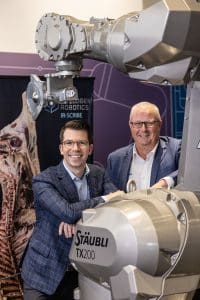 The AMPC launched its 2020-2025 strategic plan in June 2019 with a new service delivery model and a strong focus on levy payer co-investment and processor participation. The strategy set out five aspirations which are driving a transformative investment portfolio and underpin the profitability, sustainability, and productivity of the processing industry.
The AMPC launched its 2020-2025 strategic plan in June 2019 with a new service delivery model and a strong focus on levy payer co-investment and processor participation. The strategy set out five aspirations which are driving a transformative investment portfolio and underpin the profitability, sustainability, and productivity of the processing industry.
The independent economic evaluation found a benefit-to-cost ratio of 7.5 would be achieved across a sample of 10 investments, generating an estimated $14.69 million in value over 30 years*. The 10 investments evaluated represented $2.2million of the total $49 invested in R&D and marketing activities in the 2022 financial year.
AMPC conducts independent evaluations of its research investments to demonstrate the value of benefits that have emerged or are likely to emerge from investments.

AMPC CEO Chris Taylor, left, with general manager of research, development and adoption, Nick Pagett.
AMPC chief executive officer Chris Taylor said, “A benefit-cost ratio of 7.5 over 30 years is substantial. It demonstrates that our aspirational R&D strategy is on track to deliver strong, positive value to the industry in the coming years, and that is very exciting.
“These benefits will be realised primarily through reduced costs and higher productivity resulting from our R&D investments.”
Evaluations were completed in line with the Council of Rural Research and Development Corporations (CRRDC) Impact Assessment Program: Guidelines (2018). They were informed by a review of investment outputs, and consultation with researchers, industry representatives and other relevant stakeholders.
The assessments were completed by modelling the marginal costs and benefits of investments and their related outputs over a 30-year period.
Overall, the results from the sample of evaluated projects suggests that AMPC R&D investments concluding in the 2022 financial year are likely to yield substantial economic benefits to processors over the coming years.
The benefits identified from the 10 investments included:
- Reduced labour costs
- Reduced operating costs
- Improved work, health and safety
- Increased carcase yield
- Lower energy usage
- Improved social responsibility
- Improved staff retention
- Increased staff productivity
Source: AMPC

HAVE YOUR SAY